





Published on Mar 01, 2025
Air-conditioning is one of the major consumers of electrical energy in many parts of the world today and already today air-conditioning causes energy shortage in for example China. The demand can be expected to increase because of changing working times, increased comfort expectations and global warming. Air-conditioning systems in use are most often built around a vapor compression systems driven by grid-electricity. However, most ways of generating the electricity today, as well as the refrigerants being used in traditional vapor compression systems, have negative impact on the environment.
Solar air-conditioning might be a way to reduce the demand for electricity. In addition many solar air-conditioning systems are constructed in ways that eliminate the need for CFC, HCFC or HFC refrigerants. An aim of the report is to describe and explain the working principles of the components and subsystem in such general terms that the report is usable not only to those specifically interested in solar air conditioning, but to anyone interested in air conditioning, heat driven air-conditioning and solar energy. The last section of the report briefly deals with how the components can be combined to form a complete solar air-conditioning system.
Energy is the primary and most universal measure of all kinds of work by human beings and nature. Energy is a crucial input in the process of economic, social and industrial development.
Day by day the energy consumption is increasing very rapidly. The rate of energy consumption is increasing. Supply is depleting resulting in inflation and energy shortage. This is called the energy crisis.
According to law of conservation of energy ''energy can neither be created nor be destroyed but can be transformed from one form to another form. Energy can be transported from one place to another place.''
Alternative or non-conventional or renewable energy resources are very essential to develop for future energy requirements. The energy demand increases day by day because of population increasing industrialization increases and transportation increases etc.
Conventional energy sources are wood, flowing water and fossil fuels (coal, petroleum, natural gas).the conventional sources of energy are generally non-renewable sources of energy, which are being used since a long time.
At the same time it is becoming increasingly difficult to discover and exploit their new deposits. It is envisaged at known deposits of petroleum in our country will get exhausted by the few decades and coal reserves are expected to last for another hundred years. The coal, petroleum, natural gas and electricity are conventional sources of energy.
The sun is the most prominent feature in our solar system. The sun's great energy release is the result of an elaborate chemical process in the sun's core-a process of thermonuclear fusion. This energy is radiated from sun in all directions and a very small fraction of it reaches to the earth. The sun's outer visible layer is called the photosphere and has a temperature of about 6000degree.
Solar energy can be a major source of power. Its Potential is 178 billion mw which is about 20,000 times the world's demand. But so far it could not be developed on a large scale. Sun’s energy can be utilized as thermal and photovoltaic. Solar energy has the greatest potential of all the sources of renewable energy and if only a small amount of this form of energy could be used, it will be one of the most important supplies of energy specially when other sources in the country have depleted.
The solar power where sun hits atmosphere is 10^17 watts, whereas the solar power on earth's surface is 10^13 watts. Therefore, the sun gives us 1000 times more power than we need. If we can use 5% of this energy, it will be 50 times what the world will require. The energy radiated by the sun on a bright sunny day is approximately 1kw/m^2.
It works on the principle to run air conditioner by solar energy.
Solar energy received from the sun is concentrated on the solar panel to convert it into electric energy.
It is connected to the battery to store the converted electric energy in it.
Then the battery is connected to the invertor and invertor is connected to air conditioner.
When the necessary connections are made the air conditioner starts and gives desired cooling.
Solar panel refers either to a photovoltaic module, a solar thermal energy panel, or a set of solar photovoltaic (PV) modules electrically connected and mounted on a supporting structure. A PV module is a packaged, connected assembly of solar cells. Solar panels can be used as a component of a larger photovoltaic system to generate and supply electricity. Electrical connections are made in series to achieve a desired output voltage and/or in parallel to provide a desired current capability. We need four solar panel each of 250watts.
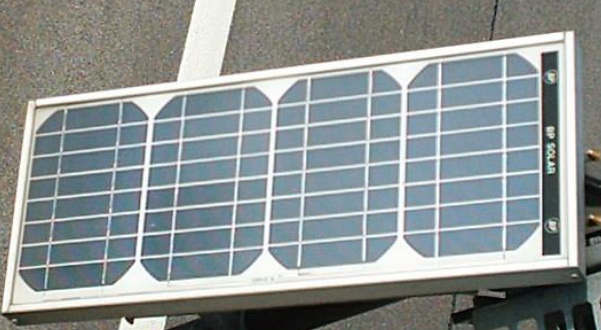
Battery store the electric power in the form of a chemical reaction. Without storage you would only have power when the sun is shining or the generator is running. We need battery of 48V.
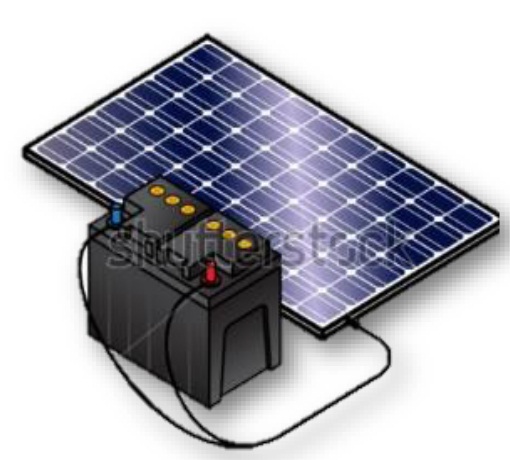
The power invertor is the heart of the system. It makes 220 volts AC from the 12 volts DC stored in the batteries. It can also charge the batteries if connected to a generator or the AC line. For 12v applications an invertor is not required .An invertor should only be required when it is necessary to convert the 12v input to power a 220v standard application.
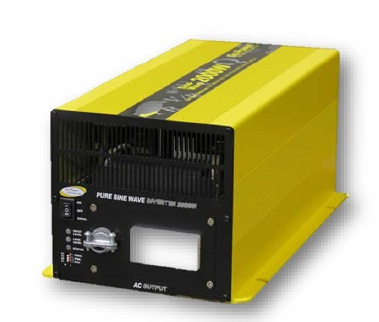
A charge controller is needed to prevent the overcharging of the battery. Proper charging of battery will prevent the damage and increase the life and performance of it.
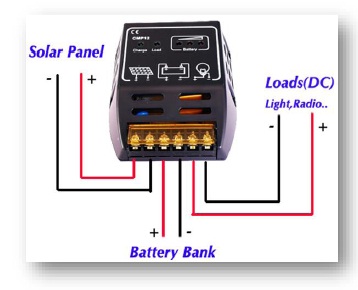
Refrigerants can be defined as medium by which heat transfer in refrigeration system takes place. It absorbs latent heat at low temperature in evaporator and gets converted from liquid to vapour, thus producing cooling effect. It rejects latent heat at atmospheric temperature in condenser and it’s phase will be changed from vapour to liquid. Except air, all refrigerants change their phase during operation.
It is defined as “A process of treating air so as to control simultaneously its temperature, humidity, cleanliness and distribution to meet requirement of the conditioned space.
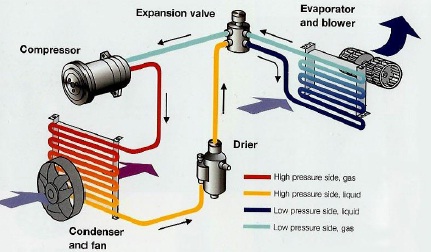
1. Compressor
2. Condenser
3. Expansion valve
4. Evaporator
5. Receiver drier
6. Condenser fan
7. A.C. blower motor
Solar air conditioning provides a great package involving benefits. Installation expenses can be reduced through tax credits, deductions and also refunds.
Solar air conditioning does not use any Freon or other hazardous chemicals.
Solar energy may be the best way to obtain replenishes able power.
It proves economical on long run.
Solar energy does not cause any pollution.
Sunlight is totally free. There is of course the initial investment for the equipment. After the initial capital outlay you won’t be receiving a bill every month for the rest of your life from the electric utility.
Solar power can generate electricity no matter how remote the area as long as the sun shines there. Even in areas that are inaccessible to power cables solar power can produce electricity.
Solar power is used to charge batteries so that solar powered devices can be used at night.
Solar energy can only be harnessed when it is daytime.
In cloudy conditions solar collector cannot work properly as sun rays are not uniform.
Solar collectors, panels and cells are relatively expensive to manufacture.
The batteries are large and heavy and need storage space. They also need replacing from time to time.
Less efficient due to intermittent supply of suns radiation.
Process totally dependent on supply of suns radiation.
It reduces the cost of air conditioning compare to normal air conditioner. It is eco-friendly. It is efficient for cooling in small area. Initial cost of its installation is high but on long run it proves eco-friendly.
PATEL BHAVIK
DOSHI HARSHIT
PANCHAL UJAVAL
PATEL HIMANSHU
PATEL JINAL
CHANDARANA BHAVIN
www.google.co.in
www.google.co.in/images
www.wikipedia.org
www.solarairconditioner.com
www.youtube.com